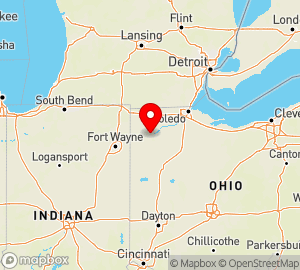Delaware
Delaware State Information

www.delaware.gov
Area (sq mi):: 2489.27 (land 1953.56; water 535.71) Population per square mile: 431.80
Population 2005: 843,524 State rank: 0 Population change: 2000-20005 7.60%; 1990-2000 17.60% Population 2000: 783,600 (White 72.50%; Black or African American 19.20%; Hispanic or Latino 4.80%; Asian 2.10%; Other 4.00%). Foreign born: 5.70%. Median age: 36.00
Income 2000: per capita $23,305; median household $47,381; Population below poverty level: 9.20% Personal per capita income (2000-2003): $30,869-$34,199
Unemployment (2004): 4.00% Unemployment change (from 2000): 0.70% Median travel time to work: 24.00 minutes Working outside county of residence: 17.10%
List of Delaware counties:
Delaware Parks
- State Parks
- National Wildlife Refuges
- National Scenic Byways
Delaware
First state; adopted the U.S. Constitution on December 7, 1787
December 7 is Delaware Day, commemorating the day it became the first state to ratify the Constitution. In 1939, the state legislature decreed that a commission be set up to organize the annual celebration. Since then, the observance has consisted mainly of the singing of patriotic songs, recitations of the Pledge of Allegiance and “Our Heritage,” a poem by Herman Hanson, and speeches and readings on the state’s history.
State capital: Dover
Nicknames: The First State; The Diamond State; The Blue Hen State
State motto: Liberty and Independence
State beverage: Milk
State bird: Blue Hen
State butterfly: Tiger Swallowtail
State fish: Weakfish (Cynoscion regalis)
State flower: Peach blossom (Prunus persica)
State fossil: Belemnite
State herb: Sweet golden rod
State insect: Ladybug (Hippodamia convergens)
State macroinvertebrate: Stonefly
State marine animal: Horseshoe crab
State mineral: Sillimanite
State soil: Greenwich Loam
State song: “Our Delaware”
State star: Delaware Diamond
State tree: American holly (Ilex opaca)
More about state symbols at:
www.delaware.gov/egov/portal.nsf/portal/aboutfactsandsymbols
http://www.destatemuseums.org/education/Homework/ statefacts.shtml
SOURCES:
AmerBkDays-2000, p. 815 AnnivHol-2000, p. 203
STATE OFFICES:
State web site: www.delaware.gov
Office of the Governor 150 William Penn St 2nd Fl Dover, DE 19901 302-577-3210 fax: 302-739-2775 www.state.de.us/governor
Secretary of State
401 Federal St
Suite 3
Dover, DE 19901
302-739-4111
fax: 302-739-3811
www.state.de.us/sos/sos.shtml
Delaware Div of Libraries
43 S DuPont Hwy
Dover, DE 19901
302-739-4748
fax: 302-739-6787
state.lib.de.us/
Legal Holidays:
Delaware
Delaware
a state on the Atlantic coast of the United States. It is situated on the eastern part of the low-lying Delmarva Peninsula and lies on Delaware Bay. Area, 5,300 sq km; population, 548,000 (1970 census), 72 percent of whom are urban. Its capital and administrative center is the city of Dover, and Wilmington is its industrial center and port. Its northern end forms part of the suburban area of Philadelphia.
Delaware is an industrial and agricultural state. Industry forms the main part of its economy and employs 73,000 persons, 70,000 of whom inhabit Wilmington and its suburbs; about 35 percent of the economically active population is employed in industry. The most important industry is chemicals; the plants of the largest chemical monopoly of the United States—Du Pont de Nemours—are in Delaware. Other important industries are shipbuilding, automobile assembly, machine-tool building, rubber, food processing, textiles, production of high-quality steel, and metalworking. There is also an armaments industry. Poultry raising, market gardening, and dairying are carried on intensively near the cities. The number of farms fell from 6,600 in 1954 to 4,400 in 1964.
Delaware is one of the original states of the United States. It was formed in 1776 during the North American War of Independence (1775-83). Until the appearance of the first settlers from Holland in the first half of the 17th century, the territory of Delaware was inhabited by an Indian tribe, the Delawares. In 1664 the territory was seized by the British; the settlement of the area by Europeans was accompanied by extermination of the native Indian population. Slave ownership became fairly widespread. After the Civil War (1861-65) the state legislature refused to ratify amendments of the United States Constitution that officially abolished slavery. Segregation and domination by conservative elements are still characteristic features of the social and political life of the state.